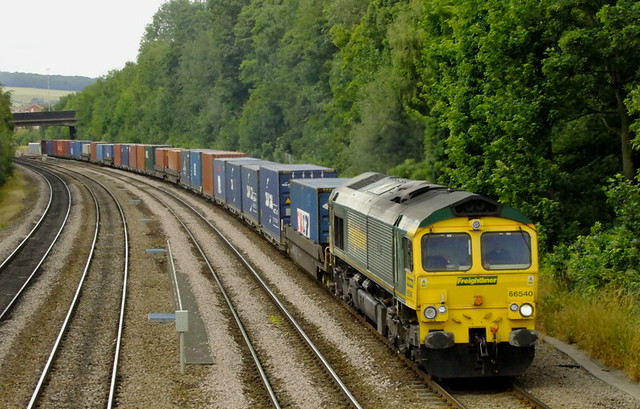- By TOP CHINA FREIGHT
- September 18, 2025
- Rail Freight, Shipping
Table of Contents
China’s rapidly expanding logistics network now includes high speed freight train China services that connect industrial hubs to domestic and international markets. These trains deliver cargo faster than traditional rail and sea options while remaining cost-effective compared to air freight. Businesses shipping electronics, machinery, textiles, and consumer goods rely on high-speed rail for improved supply chain efficiency, predictable delivery schedules, and reduced storage costs.

What is a high speed freight train in China?
High speed freight trains in China are specialized rail services designed to transport goods at speeds significantly faster than conventional cargo trains, typically reaching 200–250 km/h.
Primary Use:
Transport time-sensitive goods such as electronics, automotive parts, and medical supplies.
Domestic Coverage:
Major industrial cities including Chongqing, Wuhan, Xi’an, and Zhengzhou.
International Routes:
Connections to Europe via the China-Europe Railway Express.
Advantages:
Fast transit, reduced inventory costs, environmentally friendly compared to air freight, and lower risk of cargo damage.
These trains represent a modern logistics solution for businesses seeking a balance between speed, cost, and reliability.
How do high speed freight trains compare to other shipping methods?
Rail freight bridges the gap between expensive air freight and slower sea shipping.
| Shipping Method | Average Cost | Transit Time | Ideal For | Pros | Cons |
|---|---|---|---|---|---|
| Air Freight | High | 2–5 days | Urgent, high-value goods | Fastest, reliable | Expensive, limited capacity |
| Sea Freight | Low | 30–45 days | Bulk cargo, heavy goods | Cheapest, large capacity | Slow, port congestion risk |
| High Speed Rail | Medium | 2–10 days | Electronics, machinery, urgent consumer goods | Fast, cost-effective, eco-friendly | Limited routes, moderate capacity |
High speed rail offers a strategic advantage for businesses needing rapid delivery without the high cost of air freight.
What are the main domestic high speed freight train routes?
China’s domestic high-speed rail network efficiently links manufacturing hubs.
| Origin | Destination | Transit Time | Cargo Focus |
|---|---|---|---|
| Chongqing | Wuhan | 2 days | Electronics, machinery |
| Xi’an | Guangzhou | 3 days | Consumer goods, textiles |
| Zhengzhou | Shanghai | 2–3 days | Machinery, automotive parts |
| Wuhan | Shenzhen | 3 days | High-tech equipment, textiles |
Efficient domestic routes support just-in-time inventory management and reduce overall supply chain lead times.
How do international high speed freight trains operate?
Chongqing, Xi’an, Zhengzhou, Wuhan
Duisburg, Hamburg, Warsaw, Madrid, London
Typically 12–20 days depending on customs and route
Electronics, automotive components, textiles, and machinery
What are the costs for high speed freight trains?

Pricing depends on distance, container type, and cargo weight.
Approximate rates are:
High speed freight is more expensive than conventional rail but reduces storage and inventory costs due to faster delivery.
What cargo is ideal for high speed rail shipping?
High speed rail is suitable for goods needing fast and reliable delivery:
- Electronics and high-tech devices
- Automotive components
- Consumer products and retail inventory
- Textiles and fashion
- Perishable or semi-perishable goods using refrigerated containers
Businesses must ensure cargo packaging meets high-speed rail standards for safety and stability.
What customs documents are required for high speed freight?

Accurate documentation is crucial for border clearance.
Common requirements include:
| Document | Purpose |
|---|---|
| Commercial Invoice | Declares cargo value |
| Packing List | Details goods inside container |
| High Speed Rail Waybill | Proof of carriage contract |
| Certificate of Origin | Confirms manufacturing origin |
| Import Licenses | For restricted items |
| Customs Declaration | Legal clearance at borders |
Pros and cons of high speed freight trains in China
| Pros | Cons |
|---|---|
| Fast domestic and international delivery | Limited cargo capacity compared to sea freight |
| Cost-effective vs air freight | Fewer route options than traditional rail |
| Environmentally friendly | Some goods require special handling |
| Reliable schedules and tracking | Initial investment in high-speed logistics infrastructure |
Understanding these factors allows businesses to make strategic shipping decisions.
Case Study: Electronics Manufacturer

How to plan high speed freight shipments effectively?
Secure containers to avoid limited capacity delays.
Complete invoices, packing lists, and customs forms.
Reinforce fragile or sensitive items to withstand high-speed transport.
Use tracking tools to monitor real-time progress and anticipate delays.
Freight forwarders provide route optimization, customs clearance, and logistics expertise.
Conclusion
High speed freight train China services provide a compelling alternative for businesses seeking fast, reliable, and cost-effective transportation. Domestic transit can be as quick as 2–3 days, while international delivery to Europe can reach 12–20 days. Companies shipping electronics, machinery, consumer goods, and textiles benefit from predictable schedules, lower inventory costs, and reduced environmental impact. Integrating high-speed rail into logistics planning strengthens supply chain reliability, improves customer satisfaction, and enhances global competitiveness.
Need a Shipping Quote?
If you want expert guidance and peace of mind, our team is ready to assist.
TJ China Freight offers tailored solutions to help businesses of all sizes ship more reliably from China.

FAQ
Q1:Can small businesses use high speed rail?
Yes. LCL services allow small shipments to share container space, making high-speed rail cost-effective for SMEs.
Q2:Are refrigerated containers available?
Yes. Temperature-controlled containers can transport perishable items such as food, medical supplies, and pharmaceuticals.
Q3:Do customs inspections cause delays?
Minor delays may occur, but accurate documentation and experienced forwarders minimize risks, ensuring smooth clearance.
Q4:Which cargo types are unsuitable for high speed rail?
Oversized, extremely heavy, or certain hazardous goods may require alternative transport or special permits.
Q5:How does high speed rail compare with air freight?
High speed rail is cheaper than air freight while offering reasonable transit times, making it ideal for high-value goods with moderate urgency.
